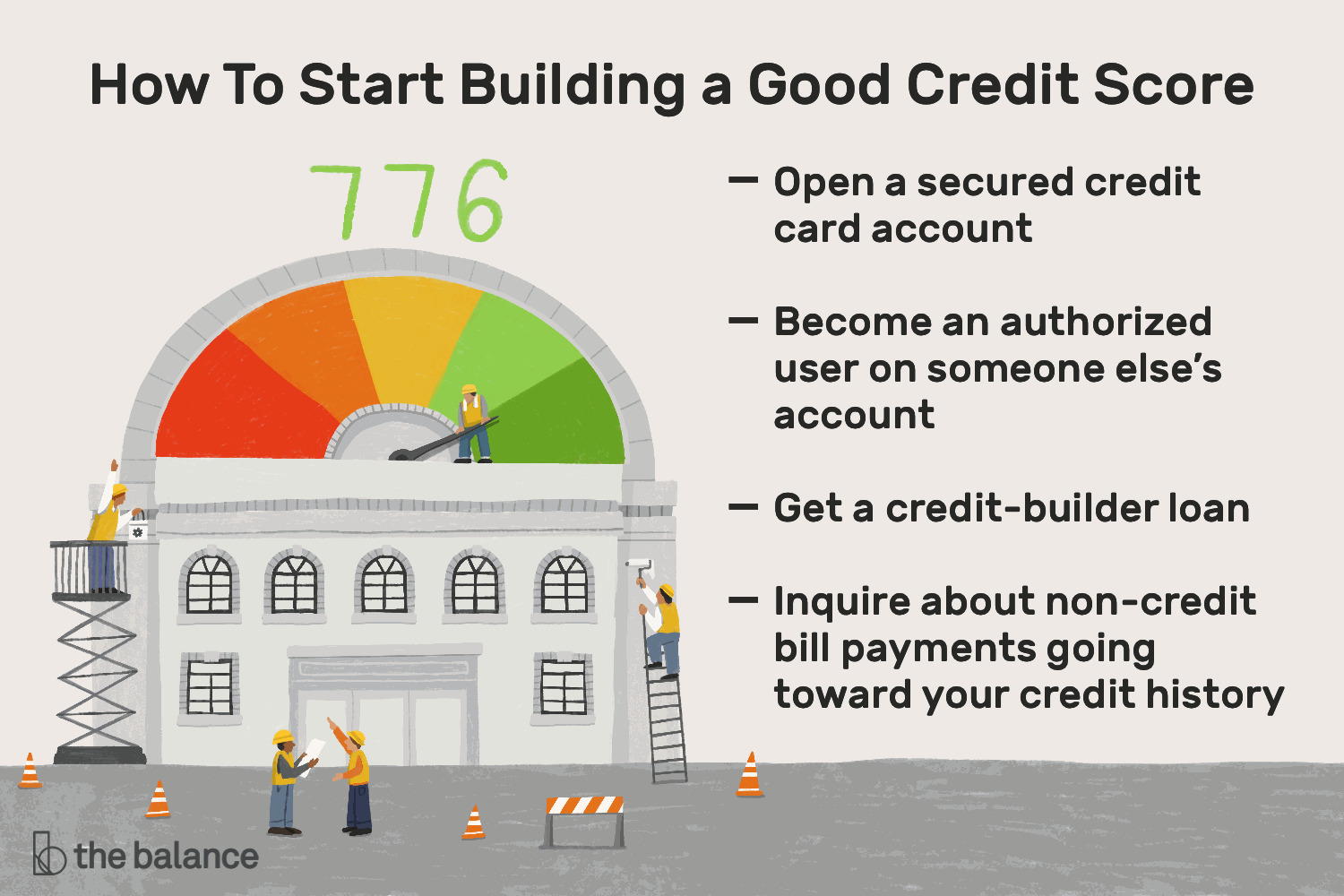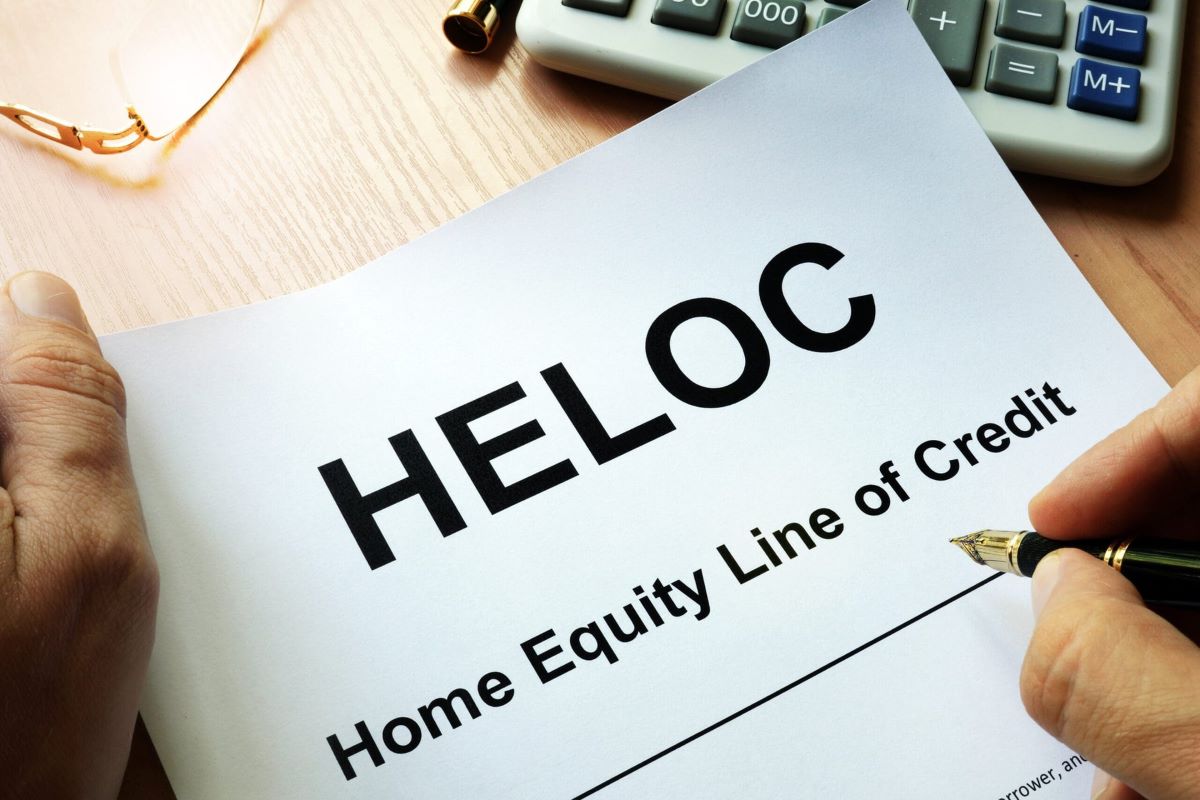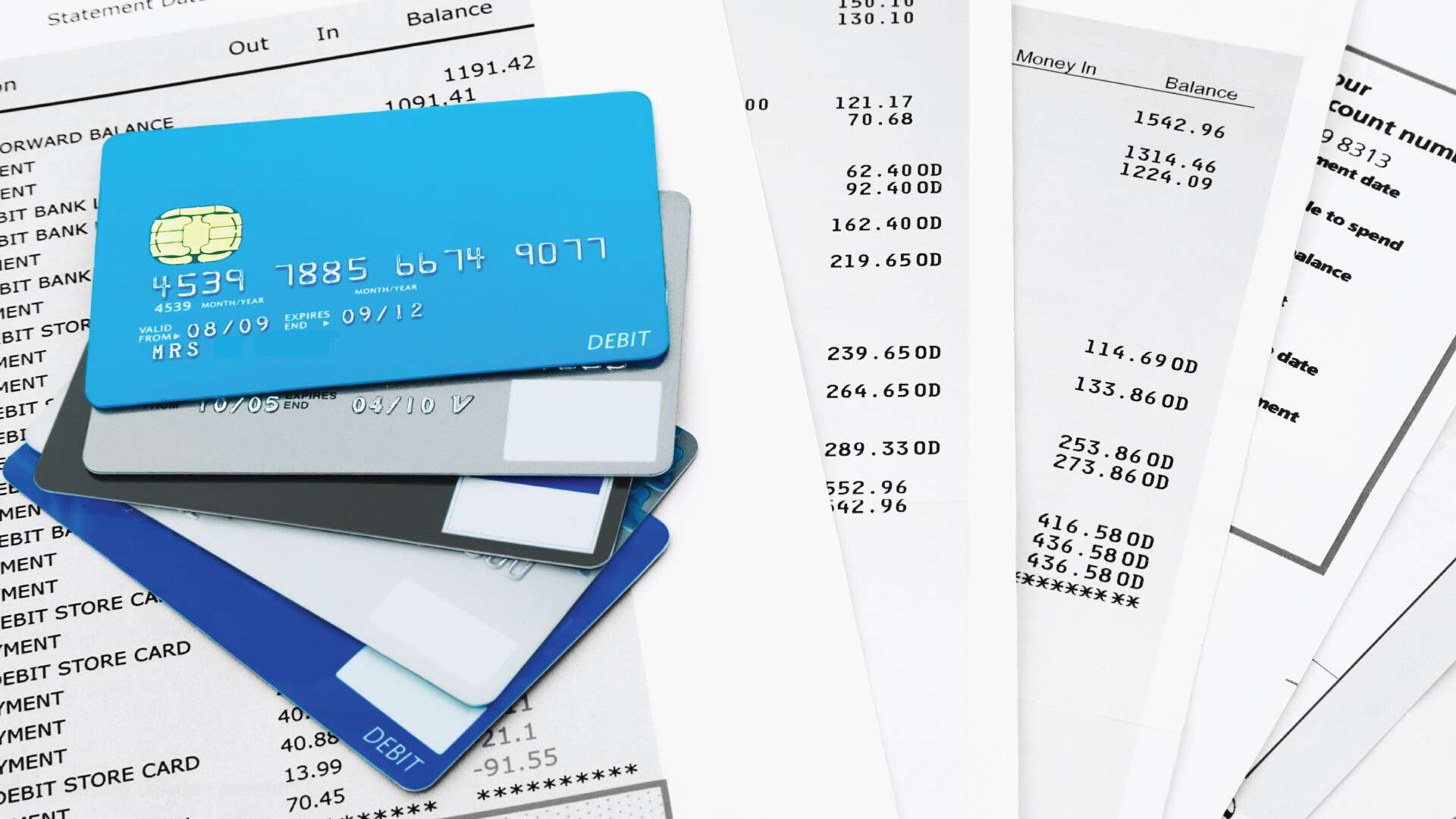Home>Finance>How Long Does It Take To Get Home Equity Line Of Credit


Finance
How Long Does It Take To Get Home Equity Line Of Credit
Published: January 15, 2024
Find out how long it takes to secure a home equity line of credit (HELOC) and get the financing you need for your financial goals. Explore finance options now.
(Many of the links in this article redirect to a specific reviewed product. Your purchase of these products through affiliate links helps to generate commission for LiveWell, at no extra cost. Learn more)
Table of Contents
- Introduction
- What is a Home Equity Line of Credit?
- How Does a Home Equity Line of Credit Work?
- The Application Process for a Home Equity Line of Credit
- Factors That Affect the Timeframe for Approval
- Typical Timeline for Approval and Funding
- How to Expedite the Process of Getting a Home Equity Line of Credit
- Conclusion
Introduction
Are you considering accessing the equity in your home to fund home improvements, cover unexpected expenses, or consolidate debt? A Home Equity Line of Credit (HELOC) can provide you with the flexibility and financial resources you need. But how long does it take to get a Home Equity Line of Credit?
A Home Equity Line of Credit is a type of loan that is secured by the value of your home. It allows homeowners to borrow against the equity they have built up in their property.
In this article, we will explore the process of obtaining a Home Equity Line of Credit and provide insights into the factors that can affect the timeframe for approval. We will also offer tips on expediting the process, helping you access the funds you need in a timely manner.
Whether you’re a first-time applicant or considering a new HELOC, understanding the timeline and requirements can help you make informed decisions and plan accordingly. So, let’s dive in and explore the ins and outs of getting a Home Equity Line of Credit.
What is a Home Equity Line of Credit?
A Home Equity Line of Credit (HELOC) is a type of loan that allows homeowners to tap into the equity they have built up in their home. Equity is the difference between the market value of a property and the amount still owed on its mortgage.
Unlike a traditional loan where you receive a lump sum of money, a HELOC operates more like a credit card. It provides you with a revolving line of credit that you can access as needed, up to a predetermined limit. This means that you can borrow and repay funds multiple times within the draw period.
The draw period, usually lasting around 5 to 10 years, is when you can access the funds from your HELOC. During this time, you only need to make interest payments on the borrowed amount. After the draw period ends, you enter the repayment period, which typically ranges from 10 to 20 years. During the repayment period, you will need to make principal and interest payments.
A key advantage of a HELOC is that you only pay interest on the amount you borrow, providing flexibility and cost savings compared to a traditional loan. Additionally, the interest you pay on a HELOC may be tax-deductible, but it is always recommended to consult with a tax advisor for specific details regarding your situation.
It’s important to note that while a HELOC can be a valuable financial tool, it is secured by your home. This means that if you fail to repay the loan, your property could be at risk of foreclosure.
Now that we have a basic understanding of what a Home Equity Line of Credit is, let’s delve into how it works and the process of obtaining one.
How Does a Home Equity Line of Credit Work?
A Home Equity Line of Credit (HELOC) works similarly to a credit card, but with your home as collateral. Here’s how it typically works:
- Equity assessment: To determine your eligibility and the maximum amount you can borrow, lenders will assess the value of your home and the outstanding balance on your mortgage. The equity in your home is calculated by subtracting the mortgage balance from the current market value.
- Approved credit limit: Once your equity is assessed, the lender will determine the approved credit limit for your HELOC. This limit is usually a percentage of your home’s appraised value, typically ranging from 75% to 85%.
- Draw period: During the draw period, which is typically around 5 to 10 years, you can access funds from your HELOC as needed. You can use these funds for various purposes, such as home improvements, educational expenses, or debt consolidation.
- Repayment period: After the draw period ends, you enter the repayment period, which can last anywhere from 10 to 20 years. During this period, you will need to repay the outstanding balance, including principal and interest.
- Interest rates: HELOCs generally have variable interest rates, meaning the interest rate can fluctuate over time. The interest rate is often tied to an index, such as the prime rate, plus a margin determined by the lender. It’s essential to understand the terms of your HELOC regarding interest rates and any potential changes.
- Flexible repayment: One of the key benefits of a HELOC is the flexibility it offers. During the draw period, you have the choice to make interest-only payments or pay both principal and interest. This flexibility allows you to manage your cash flow more effectively.
- Access to funds: With a HELOC, you can access the funds through various methods, such as writing a check, using a debit card, or transferring funds online. This ease of access makes it convenient to use the funds when needed.
- Revolving credit: Similar to a credit card, a HELOC offers a revolving line of credit. This means that as you repay the borrowed amount, your available credit increases, allowing you to borrow again if necessary, up to the approved limit.
It’s crucial to keep in mind that the terms and conditions of a HELOC can vary among lenders, so it’s essential to review and understand the specific terms of your loan agreement.
Now that we have a better understanding of how a Home Equity Line of Credit works, let’s move on to the application process and what factors can affect the timeframe for approval.
The Application Process for a Home Equity Line of Credit
Applying for a Home Equity Line of Credit (HELOC) typically involves several steps. While the exact process may vary among lenders, here is a general overview of what to expect:
- Research and preparation: Start by researching different lenders and comparing their HELOC offerings. Consider factors such as interest rates, fees, and customer reviews. Once you determine the lender you want to work with, gather the necessary documents, such as proof of income, homeowner’s insurance information, and property documents.
- Initial application: Begin the application process by submitting an initial application form. This form will collect basic information about you, your home, and your financial situation. Be prepared to provide your contact details, employment information, and estimated property value.
- HELOC disclosure: Upon submitting the initial application, you will receive a HELOC disclosure, which outlines the terms and conditions of the loan. It is crucial to carefully review this document and understand the interest rates, repayment terms, and any associated fees.
- Appraisal and verification: After reviewing the disclosure and proceeding with the application, the lender will typically require an appraisal of your property to determine its current value. Additionally, they may request verification of your income and employment. This step helps the lender assess your eligibility and the maximum amount you can borrow.
- Underwriting process: Once the appraisal and verification steps are completed, your application moves to the underwriting process. During underwriting, the lender assesses your creditworthiness, financial stability, and ability to repay the loan. They may review your credit score, debt-to-income ratio, and other factors to make a final decision.
- Approval and terms: If your application is approved, the lender will provide you with the final terms, including the approved credit limit, interest rate, and repayment period. It is important to carefully review these terms and ask any questions before proceeding.
- Closing and funding: Once you accept the terms, you will move on to the closing process. This involves signing the necessary loan documents and may require the presence of an attorney or notary. After the closing, the funds from your HELOC will be available for you to access as needed.
The timeframe for approval can vary depending on factors such as the lender’s internal processes, the complexity of your financial situation, and the appraisal and verification process. In some cases, approval can take several weeks, while in others, it may be expedited to just a few days.
Now that we understand the application process, let’s explore the factors that can affect the timeframe for approval.
Factors That Affect the Timeframe for Approval
Several factors can influence the timeframe for approval when applying for a Home Equity Line of Credit (HELOC). While the exact timeline can vary depending on the lender and individual circumstances, here are some key factors to consider:
- Documentation and Information: The time it takes to gather and submit the necessary documentation can impact the approval timeline. Providing accurate and complete information upfront can help expedite the process.
- Property Appraisal: An appraisal is typically required to determine the current value of your property. The availability of certified appraisers and scheduling appointments can affect the timeframe for approval.
- Verification Process: The lender will verify your employment, income, and other financial details. Delays may occur if there are discrepancies in the provided information or if further verification is required.
- Credit History: The lender will review your credit history and score to assess your creditworthiness. If there are inaccuracies on your credit report or if additional information is needed, it can delay the approval process.
- Review and Underwriting Process: The lender’s internal processes, such as the workload of underwriters and the complexity of your financial situation, can affect the timeline for approval. Some lenders may have a more streamlined or efficient process than others.
- Loan Amount and Collateral: The size of your requested loan and the value of your property can influence the approval timeline. Higher loan amounts and complex collateral arrangements may require additional review and evaluation.
- Market Conditions and Interest Rates: External factors, such as market conditions and interest rates, can also impact the approval process. Lenders may need to adjust their assessment and review processes based on market fluctuations and changes in lending policies.
It’s important to manage your expectations and understand that the approval timeline may differ from lender to lender. Some lenders may offer accelerated approval processes or expedited services for certain customers.
Now that we know the factors that can impact approval time, let’s explore the typical timeline for approval and funding.
Typical Timeline for Approval and Funding
The timeframe for approval and funding of a Home Equity Line of Credit (HELOC) can vary depending on several factors, including lender processes, borrower qualifications, and the complexity of the application. While it is essential to consult with your specific lender for accurate timelines, here is a general overview of the typical process:
- Application Submission: Once you submit your application, the lender will review it for completeness and begin the evaluation process. This step usually takes a few business days.
- Documentation and Verification: The lender will verify the information you provided, such as employment, income, and property details. They may also request additional documentation or clarification, which can add a few more days to the timeline.
- Appraisal: The lender will order an appraisal to assess the current value of your property. Depending on the availability of appraisers and scheduling, this step can take anywhere from a few days to a couple of weeks.
- Underwriting and Approval: Once all the necessary documentation is in place, your application will be reviewed by the lender’s underwriting team. The complexity of your financial situation and the lender’s internal processes will determine the length of this step, which can range from a few days to several weeks.
- Closing Process: If your application is approved, you will move on to the closing process. This involves signing the loan documents and may require the presence of an attorney or notary. The closing process can take a few days to coordinate and complete.
- Accessing Funds: Once the loan is closed, you can begin accessing the funds from your HELOC. This can typically be done through checks, transfers, or a debit card provided by the lender. The availability of funds depends on the lender’s disbursement guidelines and can range from a few days to a week.
It’s important to note that these timelines are approximate, and actual timelines can vary based on individual circumstances and lender-specific processes. Some lenders may offer expedited services or prioritize certain applications, which may result in faster approval and funding.
If you have a time-sensitive need for the funds, it’s recommended to discuss your timeline requirements with the lender during the application process. They may be able to provide a more accurate estimate and offer suggestions to expedite the process if possible.
Now that we have an idea of the typical timeline, let’s explore some tips on how to expedite the process of getting a Home Equity Line of Credit.
How to Expedite the Process of Getting a Home Equity Line of Credit
If you’re looking to speed up the process of obtaining a Home Equity Line of Credit (HELOC), there are several steps you can take to help expedite the process. Here are some tips to consider:
- Gather All Documentation in Advance: Before starting the application process, gather all the necessary documentation. This may include proof of income, homeowner’s insurance information, property documents, and other required paperwork. Having these documents ready and organized can help streamline the application process.
- Complete the Application Accurately: Ensure that you fill out the application accurately and thoroughly. Double-check the provided information for any discrepancies or missing details before submitting the application. Incomplete or inaccurate applications can lead to delays or additional requests for information.
- Respond Promptly to Requests for Information: If the lender requests additional documentation or clarification, respond promptly. Delays in providing requested information can prolong the approval process. Stay proactive and maintain clear communication with the lender throughout the application process.
- Be Available for Appraisal: Schedule the property appraisal promptly and ensure you or someone authorized to provide access to the property is available. A timely appraisal can help move the process forward without unnecessary delays.
- Maintain Good Credit: A strong credit history and a good credit score can positively impact the approval timeline. Before applying for a HELOC, review your credit report and address any inaccuracies. Pay your bills on time and manage your credit responsibly to ensure a favorable credit profile.
- Communicate Your Timeline Needs: If you have a specific timeline requirement for accessing the funds, make sure to communicate this to the lender upfront. They may have options available to expedite the process or prioritize your application if feasible.
- Choose a Lender with Efficient Processes: Research different lenders and their processes for approving and funding HELOCs. Look for lenders known for their efficiency and promptness in processing applications. Reading reviews and seeking recommendations can help identify lenders that prioritize customer service and quick turnaround times.
- Stay Organized and Follow Up: Keep track of all the steps in the application process and follow up with the lender regularly. Stay proactive by checking the status of your application, confirming receipt of documents, and addressing any outstanding requirements promptly.
By taking these steps, you can help streamline the process and potentially reduce the approval and funding timeline for your Home Equity Line of Credit.
Now that we’ve explored ways to expedite the process, let’s wrap up with some final thoughts.
Conclusion
Obtaining a Home Equity Line of Credit (HELOC) can be a valuable financial tool for homeowners seeking to access the equity in their homes. While the timeline for approval and funding can vary based on factors such as lender processes, borrower qualifications, and property appraisals, understanding the application process can help you navigate the journey more effectively.
Remember, when applying for a HELOC, it is crucial to gather all necessary documentation, provide accurate information, and respond promptly to any requests from the lender. Maintaining strong credit, choosing a lender with efficient processes, and communicating your timeline needs can also help expedite the approval process.
Be aware that the typical timeline for approval and funding ranges from a few weeks to several weeks, depending on various factors. However, by staying organized, proactive, and engaged throughout the application process, you can help ensure a smoother and faster experience.
Before moving forward with a HELOC, carefully consider your financial situation, repayment ability, and the purpose for which you’re accessing the funds. Evaluate the terms and conditions of the loan, including interest rates, repayment periods, and fees, and consult with a financial advisor if needed.
Now that you have a better understanding of how to obtain a Home Equity Line of Credit and the factors that can affect the process, you can make informed decisions and confidently pursue your financial goals. Whether you’re looking to renovate your home, cover unexpected expenses, or consolidate debt, a HELOC can provide you with the flexibility and financial resources you need to achieve your objectives.
Remember, each lender may have their own specific requirements and processes, so it’s essential to consult with them directly for accurate information and guidance tailored to your individual circumstances.














